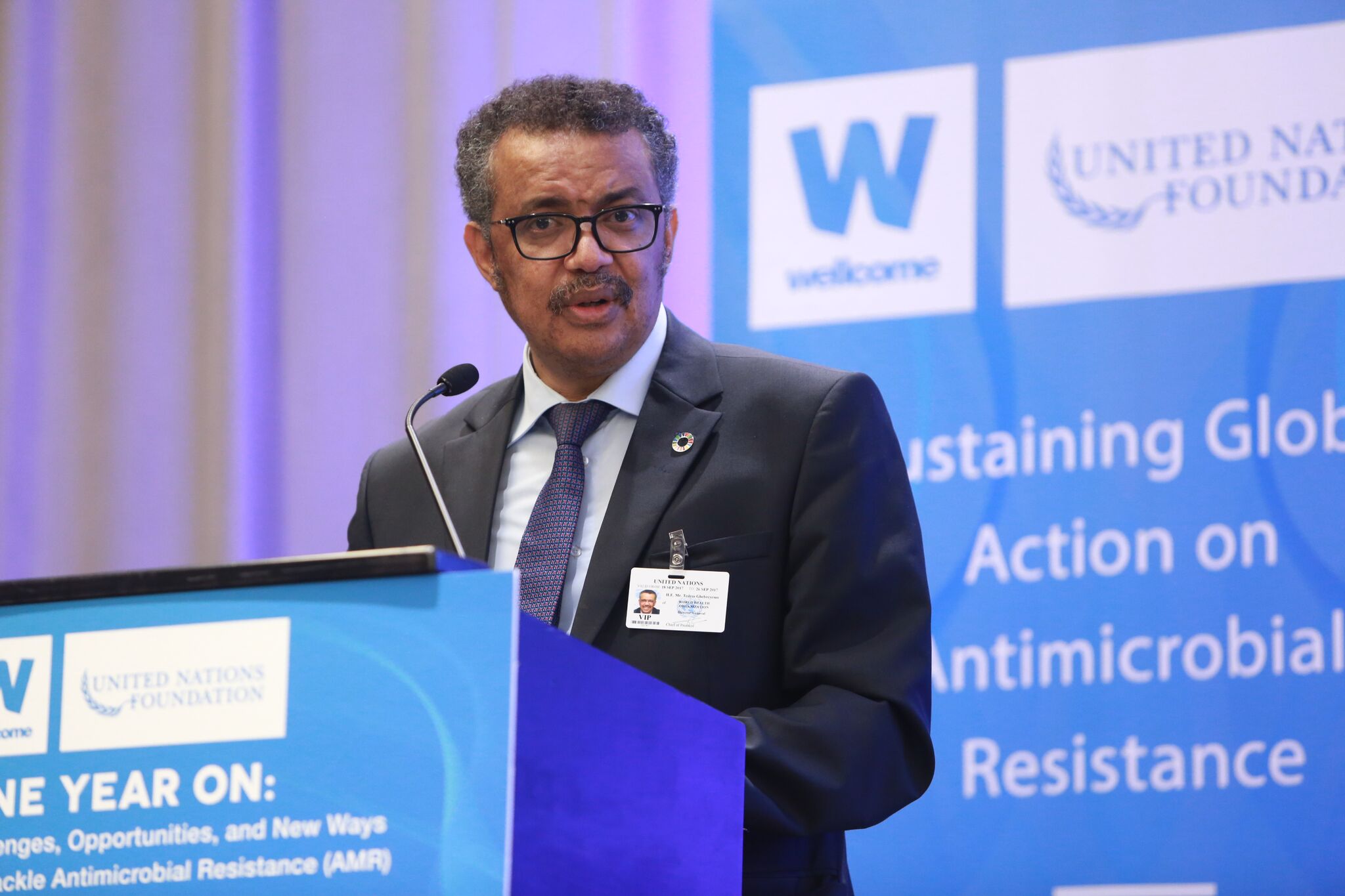Tackling future threats is never easy. Last year, the UN launched a new initiative aimed at tackling a growing problem that could someday lead to catastrophe. Antimicrobial resistance (AMR) essentially means antibiotics are becoming less effective, laying the foundation for a looming public health crisis.
All 193 of the UN’s member states signed an agreement in September 2016, promising to come up with action plans to raise public awareness, impose new regulations on the use of antibiotics by doctors and farmers, and to push for innovation in the development of new antibiotics. In March 2017, the UN announced the creation of the Interagency Coordination Group on Antimicrobial Resistance, a panel made up of UN officials, officials from other international groups such as the World Health Organization (WHO), and public health experts.
On the sidelines of this year’s UN General Assembly in New York, members of this new group gathered with government officials, public health advocates and pharmaceutical industry representatives to discuss what progress has been made since September 2016.
The consensus: Not enough progress has been made
“The continuing rise of AMR is a terrifying threat that has huge implications for human health,” Dr. Tedros Adhanom Ghebreyesus, director general of the WHO, told the group. “If we don’t tackle this global issue effectively together it will jeopardize the Sustainable Development Goals and will take us back to a time when people feared infections and risked their lives for minor surgeries.”
The growing threat of AMR is a result of how pervasive antibiotics have become. The fact that sick people worldwide have access to the medicine they need is a good thing — but it could backfire, as bacteria become increasingly able to resist these drugs. And as traditional antibiotics become less effective, there are very few new drugs in the pipeline to replace them, according to a WHO report released this week. Public health advocates have been asking patients not to ask for antibiotics, and doctors not to prescribe them by default.
In his speech, Tedros said that the UN and its partners had done a good job sounding the alarm. “Now, at last, AMR is starting to catch the attention of political leaders,” he said. For instance, the topic was on the agenda at the G20, and Tedros said that even Donald Trump had mentioned it during the summit as a threat that had his attention. “We have reached an historic turning point,” Tedros said. “We must not let this moment pass.”
The cost of inaction would be great. If present trends continue, more than 10 million people could die from infections by 2050. The crisis could also destabilize global economies. “The AMR fallout by 2050 would be equivalent to a financial crisis that we saw in 2008,” said Tim Evans, senior director of health, nutrition and population at the World Bank Group. By 2050, the world could be seeing up to 3.8 percent decline in global GDP annually without action, according to World Bank figures. “If you look at the distribution of that economic fallout, it hits the poor disproportionately. Lower-income countries could lose more than 5 percent of their GDP due to failure to address the problem,” Evans said.
One of the major victories came this year when McDonalds pledged to step up its efforts to source meat from farms that don’t use antibiotics.
The fast food chain has already been serving antibiotic-free chicken in the US for over a year; now, the corporation is pledging to expand those efforts to beef and pork in the US, and to do the same worldwide. This set an example for other restaurants, and for corporations that raise and sell livestock and fish, said Jean Holloran, director of food policy initiatives at Consumers Union. “Animal production accounts for 70 percent of consumption of antibiotics sold in the United States,” she said. “We think this number can come down, and must come down.”
“The consumer market of the future is in no antibiotics meat and poultry,” Holloran continued, “and these changes can be done without losing mass production. You can still have relatively cheap meat and poultry without using medically important antibiotics. This is the wave of the future.”
The threat of AMR is similar to the threat of climate change.
It is a potential future catastrophe for health and the economy that can only be averted by effective global action in the present. Ed Whiting, director of policy and chief of staff for the Wellcome Trust, said the Paris Agreement on climate change would provide an example as the UN begins to ramp up its younger effort to fight AMR. “We should learn form the Paris Agreement,” he said, calling for a system in which countries commit to take action, and, over time, these commitments “ratchet up.”
Dr. Raj Taneja, senior director of pharmaceutical product development at the TB Alliance, agreed that countries will need a Paris-like set of commitments if AMR is to be tackled effectively. “I’m looking for an actionable plan in which we have responsibilities and people will be held responsible,” he said.
As UN Dispatch editor Mark Goldberg wrote last year, like climate change, AMR is one issue where leaders took the rare step of agreeing to tackle it before it became a full-blown crisis. The question is whether these good intentions and early efforts will be enough to get ahead of the growing threat before it spins out of control.
